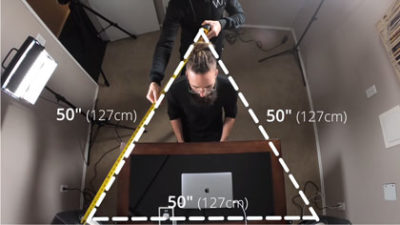Outside Scoop: Natural-Sounding Auto-Tune, Composition Tips, Proper Studio Monitor Setup and More
This week’s Outside Scoop covers articles, podcasts, and videos on music production and engineering from all around the web. Gear roundups, interviews, and tutorials are all fair game, making this the best place to catch up on all the most significant content to come out within the past week. We’ll be taking a look at achieving natural-sounding pitch correction with Auto-Tune, tips on composing music, proper studio monitor setup and more.
How To Use Auto-Tune For Natural Pitch Correction
The robotic effect that Antares’ Auto-Tune can apply to a sound is widely recognizable, and even your grandmother is probably familiar with it. Did you know that Auto-Tune doesn’t have to be used in this way? Graham Cochrane of the Recording Revolution demonstrates how you can apply natural-sounding pitch correction to vocals using Auto-Tune, as well as how to attain that classic, recognizable Auto-Tune effect.
The 3 Building Blocks of Acoustic Treatment
Bobby Owsinski explains how you can begin sound treating your studio using acoustic panels, bass traps, and diffusers. He lays out how to deal with reflective surfaces, nulls/peaks in your room around the 40-200Hz range, and direct reflections. By understanding the acoustic problems presented by your room, you can start to deal with them effectively.
10 Tips from Pros on Composing
MusicTech’s Andy Price created a list of composition tips containing advice from people like Benn Jordan, Jazzy Jeff, Beatie Wolfe and more. Some of the suggestions on this list include using an instrument to explore melodic ideas in real-time, putting time into quality songwriting, and curating ideas using pre-written content. This article also contains some great tips from MusicTech’s avid readers.
26 Recording Experiments: The A-Z of Trying New Things in the Studio
The way LANDR has formatted this article is entertaining, since it goes through each letter of the alphabet, recommending new things you can try out in your studio. Aleatoric, Beat matching, Crank it, Double tracking, Effects, Field recordings, Gates… You get the idea. Each item gets right to the point, offering up quick tips you can apply to your music production process immediately.
4 of the Best Reverb Plugins on the Market
Black Ghost Audio’s newest writer, Derek Proch, takes a look at four of the best reverb plugins that money can buy. His selections include a convolution reverb, all-purpose reverb, vocal reverb, and a natural-sounding digital reverb. The price points of each reverb vary widely across the board, so there’s something for everyone here.
Producer / Mixer / Engineer, DJ Swivel
Grammy award winner DJ Swivel has worked with artists like Coldplay, Dua Lipa, Armin Van Buuren, The Chainsmokers, and BTS. He appears on Pensado’s Place this week and talks about his come up in the music industry, and the projects he’s currently working on. One of the most exciting projects he mentions is called House Thirty-Three, which is a high-end residential recording house that artists can book for weeks at a time.
A Fully Modular Core is Coming to Bitwig Studio
Bitwig Studio 3 is about to deliver a modular workspace called “The Grid.” As Peter Kirn of Create Digital Music (CDM) says, “A modular setup is the very opposite of a preset mentality for music production.” The hope is that this drives people away from the reliance on presets, and prompts them to create sounds that are unique. Read the full article to find out how The Grid stacks up against modular features found within other DAWs.
Voice-Over Artist Andrew Peters, Spotify Hardware, and Tinnitus Help
Bobby Owsinski’s Inner Circle podcast focuses on voice-over artist Andrew Peters, who is one of the top voice actors in SouthEast Asia, Australia, and New Zealand. Starting off the podcast, Owsinski mentions that Spotify Voice is a new hardware unit coming out that gives you voice control over Spotify inside your car via Bluetooth. Additionally, a group of researchers from the University of Michigan has found that they can slowly train the brain to tune out the ringing caused by tinnitus. Some people who took part in the study said their tinnitus went away completely!
How to Set Up, Test and Improve Your Home Music Production Studio Room
Warp Academy put out a great video on how you can significantly improve the monitoring situation in your home studio by merely rearranging your desk and monitors. Acoustic treatment isn’t covered in too much detail, but a lot of information regarding the physics of how sound propagates throughout rooms is offered. Overall, this is an excellent intro to home studio acoustics.
Charles Hoffman is a Mixing and Mastering Engineer at Black Ghost Audio. After graduating from the University of Manitoba with an English degree, Charles completed his education at Icon Collective in Los Angeles, CA.
Please note: When you buy products through links on this page, we may earn an affiliate commission.








[…] http://sonicscoop.com/2019/01/26/outside-scoop-natural-sounding-auto-tune-composition-tips-proper-s… Outside Scoop: Natural-Sounding Auto-Tune, Composition Tips, Proper Studio Monitor Setup and More […]